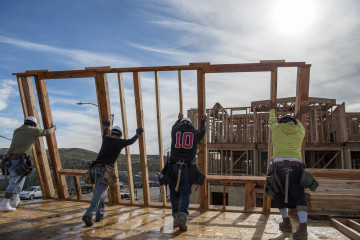Japan Needs More People (and a Cultural Change): Editorial

(Bloomberg View) —Japan’s Prime Minister Shinzo Abe has been trying hard to combat his nation’s alarming demographic decline: promoting robots and other productivity-enhancing technology, bringing more women into the workforce, even opening the door a bit wider to foreigners. It’s plain, however, that he needs to try harder still, especially when it comes to immigration.
Japanese companies already report they can’t find people to hire, and the future isn’t likely to get better — government researchers expect the country’s population to fall by nearly a third by 2065, at which point nearly 40 percent will be senior citizens. There’ll be 1.3 workers for every person over the age of 65, compared to 2.3 in 2015.
Abe’s policies have nudged birth rates higher, but the long-run fertility rate of 1.44 births per woman is still well below the replacement rate. Researchers say that to maintain the current population, Japan would have to let in more than half a million immigrants a year. (It took in 72,000 in 2015.) In a society as insular and homogeneous as Japan, any such increase would be a very tall order.
This isn’t to say nothing can be done. Abe, despite recent scandals, remains the most powerful Japanese leader in years. He has few rivals within or outside the ruling Liberal Democratic Party, and he’s shown he can be bold when the stakes are sufficiently high — in revising Japan’s military posture, for instance, and in making concessions to advance the Trans-Pacific Partnership trade deal.
He now needs to persuade Japan that substantially higher immigration is a vital necessity. So far, moves to increase the inflow have been masked — for example, by bringing in more low-skilled foreign workers under an expanded so-called training program (a device which, by the way, has facilitated abuse). A properly supervised guest-worker program is the least that’s needed, and it ought to include a pathway to permanent residency. Once the purpose is openly acknowledged, the government can also invest more in language programs and other measures to help newcomers integrate.
Japan should welcome foreign university students who want to stay and work after graduation, and encourage skilled migrants. In some cases, lowering artificially high barriers to entry will be crucial: Relieving the acute shortage of workers to care for the elderly, for instance, means redesigning the unreasonably difficult tests for foreign nurses.
A broader cultural shift is also needed. Japan must adopt a less insular outlook and encourage the use of English in business and other interactions. If, as some fear, bringing in workers from different cultures will disrupt Japan Inc.’s traditionally cozy relationship between management and labor, that might be no bad thing: Prevailing attitudes have suppressed wages and bred complacency.
Complacency is something Japan can’t afford. If the country fails to rise to the demographic challenge, it’s bound to decline. To remain prosperous, Japan has to change.







No Comment